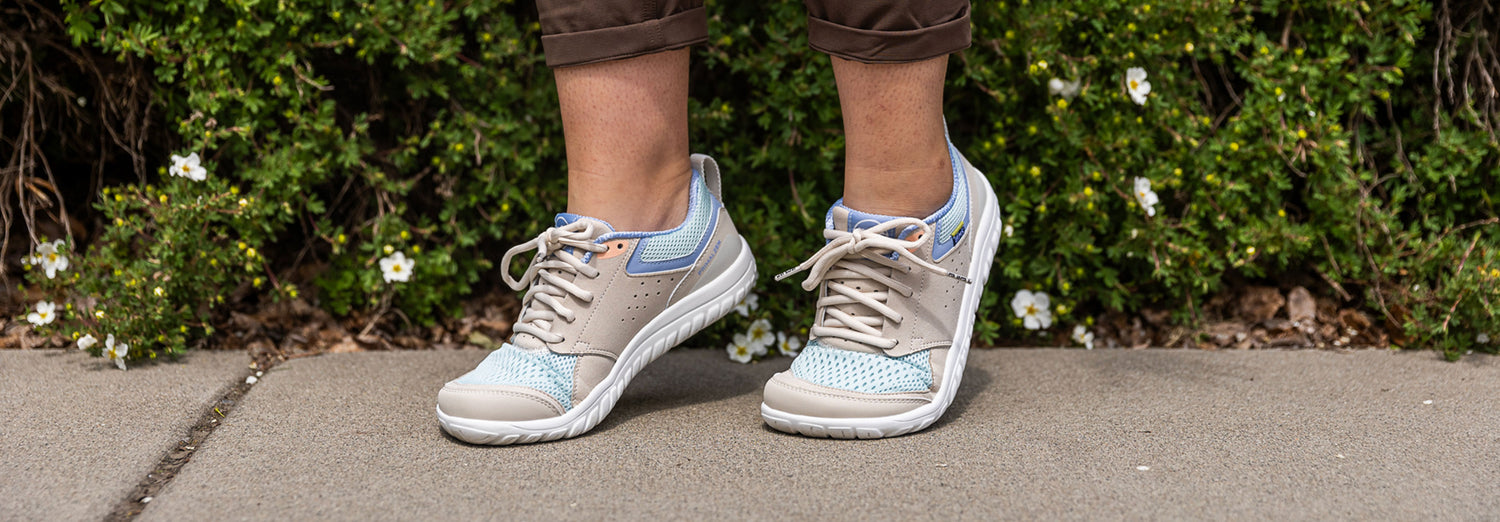Your shoes are more than just a fashion statement; they can also be a window into your foot health and overall well-being. From wear patterns to shoe condition, subtle clues can reveal a great deal about the health of your feet and potential underlying issues. By paying attention to these signs, you can take proactive steps to maintain good foot health and prevent future problems.
Let’s explore the fascinating ways in which your shoes can provide insights into your foot health. From the story told by wear patterns on the soles to the condition of your favorite pair, we'll decode the messages hidden in your footwear. By understanding what your shoes say about your health, you can make informed choices about your footwear and take better care of your feet for years to come.
Wear Patterns: The Story Your Shoes Tell
One of the most revealing aspects of shoe wear is the patterns that develop on the soles. These patterns can provide valuable insights into your foot health, gait mechanics, and overall body alignment. By examining the wear patterns on your shoes, you can uncover potential issues and take proactive steps to address them.
Pronation and Supination: Pronation refers to the natural inward rolling motion of the foot during the gait cycle. Some degree of pronation is normal and helps with shock absorption. However, overpronation, where the foot rolls inward excessively, can lead to various foot problems. If you notice excessive wear on the inner edge of your shoe, especially near the ball of the foot or the heel, it may indicate overpronation. This can result in issues such as flat feet, plantar fasciitis, or knee pain.
Conversely, supination occurs when the foot rolls outward, placing more pressure on the outer edge of the foot. This can lead to issues like ankle sprains, IT band syndrome, or stress fractures. If you see significant wear on the outer edge of your shoe, particularly near the heel, it may suggest supination.
Pressure Points: Another important aspect of shoe wear patterns is the presence of high-pressure areas. Certain parts of your foot may bear more weight than others, leading to increased wear in those areas. For example, if you have high arches, you may notice more wear on the outer edges of your shoes. On the other hand, if you have flat feet, you may see more wear on the inner edges.
Identifying these pressure points can help you understand your foot mechanics better and address any issues that may arise. Using orthotic inserts or shoes with adequate cushioning and support can help alleviate pressure and prevent further wear.
Gait Analysis: Shoe wear patterns can also provide valuable information about your gait mechanics. A podiatrist or foot health professional can conduct a gait analysis by examining the wear on your shoes and observing your walking or running patterns. This analysis can help identify any abnormalities in your gait that may be contributing to foot problems.
Treatment options for gait abnormalities may include orthotic devices, physical therapy, or gait retraining exercises. By addressing these issues, you can improve your gait mechanics and reduce the risk of developing foot problems in the future.
Shoe Rotation: Regularly rotating your shoes can help prevent excessive wear and prolong the life of your footwear. By alternating between different pairs of shoes, you can distribute the forces acting on your feet more evenly. This can help prevent specific wear patterns from developing and reduce the risk of foot problems associated with repetitive pressure on certain areas of the foot.
Shoe Choices: Impact on Foot Health
The shoes you choose to wear can have a significant impact on your foot health. Every aspect of your footwear, from the fit and support to the materials and design, plays a role in how your feet feel and function. Making informed choices about your shoes can help prevent foot problems and promote better foot health.
Proper Fit: Wearing shoes that fit well is crucial for foot health. Shoes that are too tight can cause discomfort, pain, and even foot deformities like bunions or hammertoes. Conversely, shoes that are too loose can lead to blisters, calluses, and instability. Choosing shoes that fit properly, with enough room for your toes to move and flex, can help prevent these issues and promote better foot health.
Breathability and Moisture Management: Proper ventilation is essential for foot health. Shoes that do not allow for proper ventilation can lead to excessive sweating and moisture buildup, increasing the risk of fungal infections and foot odor. Opt for shoes made from breathable materials, such as mesh or leather, and consider wearing moisture-wicking socks to help keep your feet dry and comfortable.
Activity-Specific Shoes: Different activities require different types of footwear. For example, running shoes are designed to provide cushioning and support for forward motion, while hiking boots offer stability and protection on rugged terrain. Choose shoes that are specifically designed for the activities you enjoy to ensure that your feet are adequately supported and protected.
Shoe Condition: Signs of Foot Health
The condition of your shoes can provide valuable insights into the health of your feet. From the integrity of the materials to the presence of certain features, the condition of your shoes can tell a story about how well you're taking care of your feet.
Sole Integrity: The soles of your shoes play a crucial role in supporting your feet and providing cushioning. Inspecting the soles can reveal how well your shoes are supporting your feet. If the soles are worn out or unevenly worn, it may indicate that your shoes are no longer providing adequate cushioning or support. Cracks or separation between the sole and the upper part of the shoe can also indicate that it's time for a replacement, as these issues can compromise the shoe's ability to protect your feet.
Insole Wear: The condition of the insoles can also provide valuable information about your foot health. If the insoles are worn down or have imprints of your foot shape, it may suggest that your shoes are not providing enough arch support or cushioning. Upgrading to orthotic insoles or replacing worn-out insoles can help improve the comfort and support of your shoes, leading to better foot health.
Upper Material: The condition of the upper part of the shoe can also provide clues about your foot health. If the material is stretched out or shows signs of excessive wear, it may indicate that your shoes are not providing enough stability or support for your feet. Inspecting the upper part of your shoes regularly can help you identify issues early and take steps to address them, such as replacing worn-out shoes or adjusting your footwear choices.
Odor and Moisture: Foul odors or signs of moisture inside your shoes can indicate poor foot hygiene or the presence of fungal or bacterial infections, such as athlete's foot. Proper shoe ventilation and hygiene practices, such as wearing moisture-wicking socks and rotating your shoes, can help prevent these issues and maintain foot health.
Conclusion:
Your choice of footwear can have a significant impact on your foot health. By choosing shoes that fit well, provide adequate support, and are appropriate for your activities, you can prevent foot problems and promote better foot health. If you experience foot pain or discomfort, consult with a podiatrist or foot health professional for guidance on selecting the right shoes for your needs.

